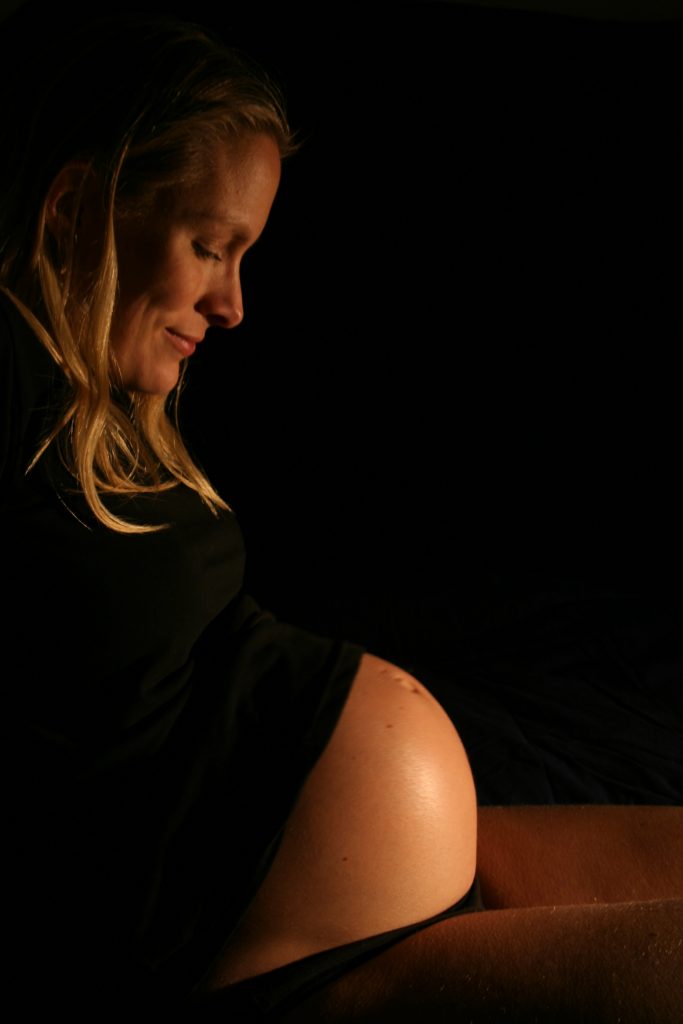 While having a child and starting a family is something that many couples look forward to in their lives, pregnancy can be very painful and burdensome on the mother. There are many drugs that can help prevent the negative side effects of pregnancy, like nausea and morning sickness, however, those drugs can sometimes do more harm than good. Nothing is worse than going through a difficult pregnancy, and then having a child born prematurely with birth defects because of drugs that were supposed to help.
While having a child and starting a family is something that many couples look forward to in their lives, pregnancy can be very painful and burdensome on the mother. There are many drugs that can help prevent the negative side effects of pregnancy, like nausea and morning sickness, however, those drugs can sometimes do more harm than good. Nothing is worse than going through a difficult pregnancy, and then having a child born prematurely with birth defects because of drugs that were supposed to help.
One case on appeal from the Eastern District of Louisiana involves such a situation. Lindsey Whitener (“Ms. Whitener”) had a son who was born both prematurely and with birth defects after she was prescribed metoclopramide in order to treat her nausea and morning sickness that she frequently experienced during her nine months of pregnancy. Ms. Whitener and her husband filed a lawsuit against a number of different pharmaceutical companies, and their main argument was that these companies had promoted the use of the drug to treat morning sickness, which was an “off-label” use. An off-label use means that a drug is prescribed for uses that are not approved by the FDA. The District Court dismissed the claims brought forth by the Whiteners because they failed to show that the defendants promoted these off-label activities. The Whiteners appealed the decision of the District Court, and the case went before the United States Court of Appeals for the Fifth Circuit.
Ms. Whitener began experiencing morning sickness very early on in her pregnancy and was prescribed the metoclopramide shortly after she began to complain of the sickness to her doctor. Metoclopramide is a generic version of the drug Reglan, and Reglan does not list morning sickness as an FDA approved the use. In 2010, the Whiteners sued PLIVA, Inc., Barr Laboratories, Inc., Teva Pharmaceutical Industries, Ltd., Alaven Pharmaceutical L.L.C., Meda Pharmaceuticals, Inc., and Schwarz Pharma, Inc. PLIVA, Barr, and Teva manufactured metoclopramide; and Alaven, Meda, and Schwarz manufactured Reglan. The Whiteners first claimed that the defendants had failed to warn them about the dangers of using metoclopramide during a pregnancy. Some of the defendants however relied on the Supreme Court decision from PLIVA, Inc. v. Mensing which held that, “because federal law requires generic drug labels to be the same at all times as corresponding brand-name drug labels, state-law inadequate warning claims based on a generic drug manufacturer’s failure to provide a more adequate label are preempted.” HPLIVA, Inc. v. Mensing, 131 S. Ct. 2567, 2577-78 (2011). Essentially, this means that when the state and federal drug laws conflict, the federal drug laws will preempt or replace the state law. Ms. Whitener’s state law claim that the defendants had failed to warn them about the dangers of the drug conflicted with the federal law and the District Court thus held that the state law claim was preempted.
 Louisiana Personal Injury Lawyer Blog
Louisiana Personal Injury Lawyer Blog


 In Louisiana, a party is responsible for the full extent of injuries he or she causes to another. Lawsuits stemming from these incidents usually arise over which party is more at fault or if any of the injuries were actually caused by the event at issue. Whether the party at fault has to pay the undisputed medical expenses is rarely at the center of these disputes, however, the following case from St. Bernard Parish, details why an injured party had to bring that very issue to appeal.
In Louisiana, a party is responsible for the full extent of injuries he or she causes to another. Lawsuits stemming from these incidents usually arise over which party is more at fault or if any of the injuries were actually caused by the event at issue. Whether the party at fault has to pay the undisputed medical expenses is rarely at the center of these disputes, however, the following case from St. Bernard Parish, details why an injured party had to bring that very issue to appeal. Car accidents have become so commonplace in our society that many states require automobile and accident insurance. If and when you find yourself in the unfortunate situation of being in a car accident, you expect the party at fault to foot the bill. That’s where insurance steps in. As insurance claims are one of the most litigated issues nationwide, the interpretation of insurance laws is not always so clear. The following case examines two specific issues that ultimately needed to be settled in the highest court in Louisiana.
Car accidents have become so commonplace in our society that many states require automobile and accident insurance. If and when you find yourself in the unfortunate situation of being in a car accident, you expect the party at fault to foot the bill. That’s where insurance steps in. As insurance claims are one of the most litigated issues nationwide, the interpretation of insurance laws is not always so clear. The following case examines two specific issues that ultimately needed to be settled in the highest court in Louisiana. The average person experiences a great deal of emotion after a serious injury. The injured person is rushed to the hospital and places a great deal of faith in doctors to treat and diagnose injuries. Sometimes a medical professional fails to accurately diagnose a patient’s injuries, which can lead to a potential lawsuit against the doctor, hospital, or usually both.
The average person experiences a great deal of emotion after a serious injury. The injured person is rushed to the hospital and places a great deal of faith in doctors to treat and diagnose injuries. Sometimes a medical professional fails to accurately diagnose a patient’s injuries, which can lead to a potential lawsuit against the doctor, hospital, or usually both. Lest anyone think college is all about classrooms and books, many universities today offer a panoply of extra curricular amenities for students to enjoy. One of the main attractions is student recreation centers. At Louisiana State University (LSU), the University Student Recreation Center (UREC) is a place where students can go with friends and guests to exercise and participate in recreational activities such as indoor rock wall climbing.
Lest anyone think college is all about classrooms and books, many universities today offer a panoply of extra curricular amenities for students to enjoy. One of the main attractions is student recreation centers. At Louisiana State University (LSU), the University Student Recreation Center (UREC) is a place where students can go with friends and guests to exercise and participate in recreational activities such as indoor rock wall climbing. Facts are one of the foundations of a successful lawsuit. In an effort to thwart a plaintiff’s chance at relief, a defendant may file an exception of no cause of action in response to a plaintiff’s complaint. An exception of no cause of action alleges that the plaintiff’s lawsuit has no legal validity, and therefore, the plaintiff has no claim. The following case out of Orleans Parish illustrates such an objection and the importance of facts, especially when those facts validate a claim that could be barred by immunity.
Facts are one of the foundations of a successful lawsuit. In an effort to thwart a plaintiff’s chance at relief, a defendant may file an exception of no cause of action in response to a plaintiff’s complaint. An exception of no cause of action alleges that the plaintiff’s lawsuit has no legal validity, and therefore, the plaintiff has no claim. The following case out of Orleans Parish illustrates such an objection and the importance of facts, especially when those facts validate a claim that could be barred by immunity. Discrimination has always been a controversial topic in America and especially salient in the workplace context. The following case arises out of a situation where an employee felt that she was discriminated against based on her race and disability. She sued in federal court based on federal and state discrimination laws.
Discrimination has always been a controversial topic in America and especially salient in the workplace context. The following case arises out of a situation where an employee felt that she was discriminated against based on her race and disability. She sued in federal court based on federal and state discrimination laws. Law enforcement agencies throughout the country have been under intense scrutiny over the past few years because of controversial policies and procedures. However, one agency in Louisiana, the Sheriff’s Office of St. John the Baptist Parish, faced another type of scrutiny surrounding the termination of a high-ranking official. The termination resulted in a lawsuit based on federal and state law.
Law enforcement agencies throughout the country have been under intense scrutiny over the past few years because of controversial policies and procedures. However, one agency in Louisiana, the Sheriff’s Office of St. John the Baptist Parish, faced another type of scrutiny surrounding the termination of a high-ranking official. The termination resulted in a lawsuit based on federal and state law. In Louisiana, the law allows a person to seek financial compensation against another person who has caused his or her injuries or failed to prevent the injuries if such a duty existed. A person has a responsibility not to harm others by their actions or with things in their possession. A Louisiana landlord has a special duty to his or her tenants to provide a safe building and will be held responsible if a tenant is injured as a result of the Landlord’s failure to repair a defect in the building that he or she knew about or should have known about. The following case illustrates some of these issues.
In Louisiana, the law allows a person to seek financial compensation against another person who has caused his or her injuries or failed to prevent the injuries if such a duty existed. A person has a responsibility not to harm others by their actions or with things in their possession. A Louisiana landlord has a special duty to his or her tenants to provide a safe building and will be held responsible if a tenant is injured as a result of the Landlord’s failure to repair a defect in the building that he or she knew about or should have known about. The following case illustrates some of these issues. When the government takes privately owned property to be used for the benefit of the public, it is called an expropriation. Federal and state law prohibit the government from taking private property without compensating the owner. The Louisiana Constitution provides that property shall not be taken or damaged by the State except for a public purpose and with just compensation paid to the owner of the private property. A landowner whose property is expropriated by the State is to be compensated so that he remains in the equivalent financial position he enjoyed before the taking. The following case provides a concrete example of such a situation.
When the government takes privately owned property to be used for the benefit of the public, it is called an expropriation. Federal and state law prohibit the government from taking private property without compensating the owner. The Louisiana Constitution provides that property shall not be taken or damaged by the State except for a public purpose and with just compensation paid to the owner of the private property. A landowner whose property is expropriated by the State is to be compensated so that he remains in the equivalent financial position he enjoyed before the taking. The following case provides a concrete example of such a situation.